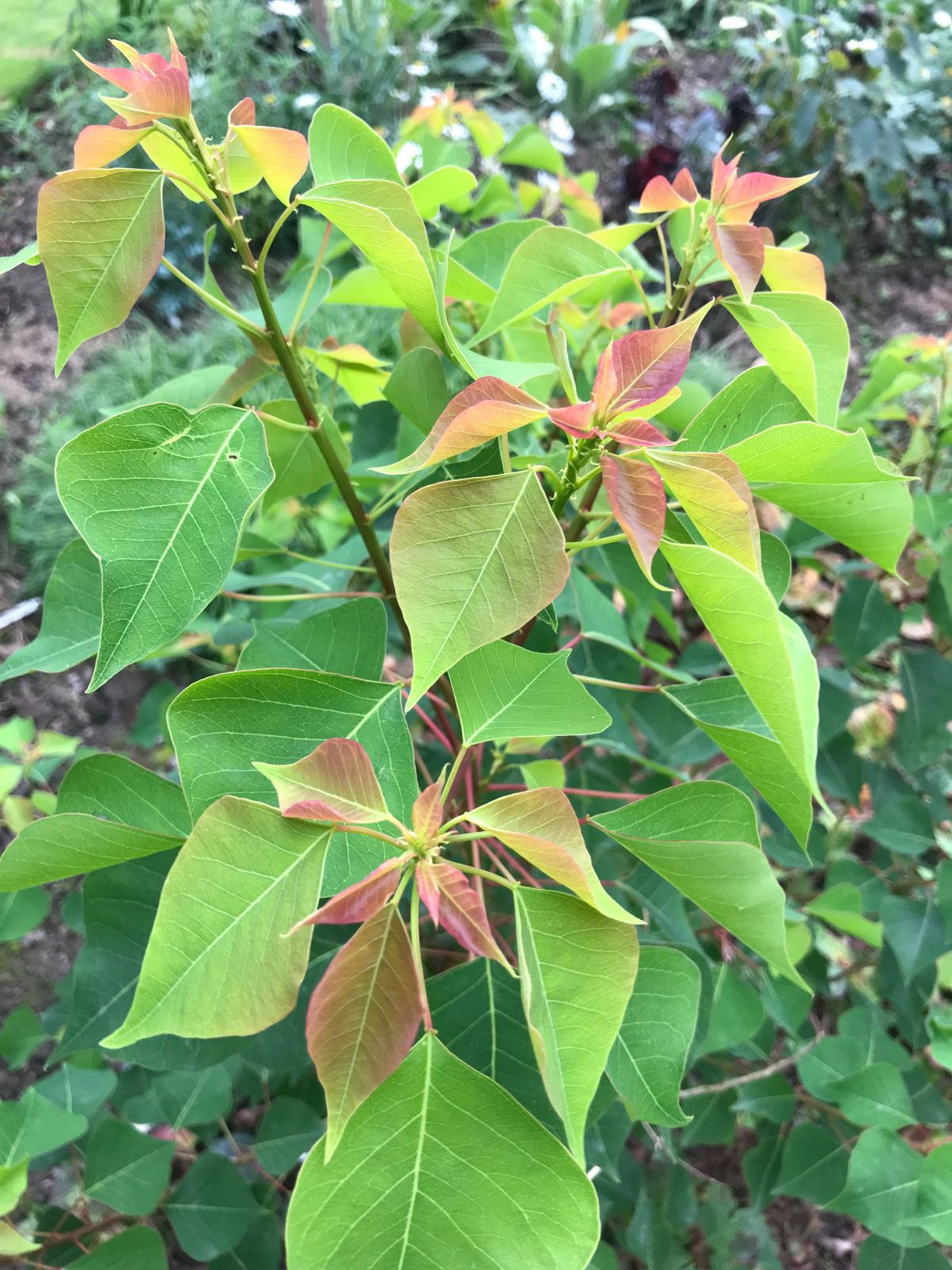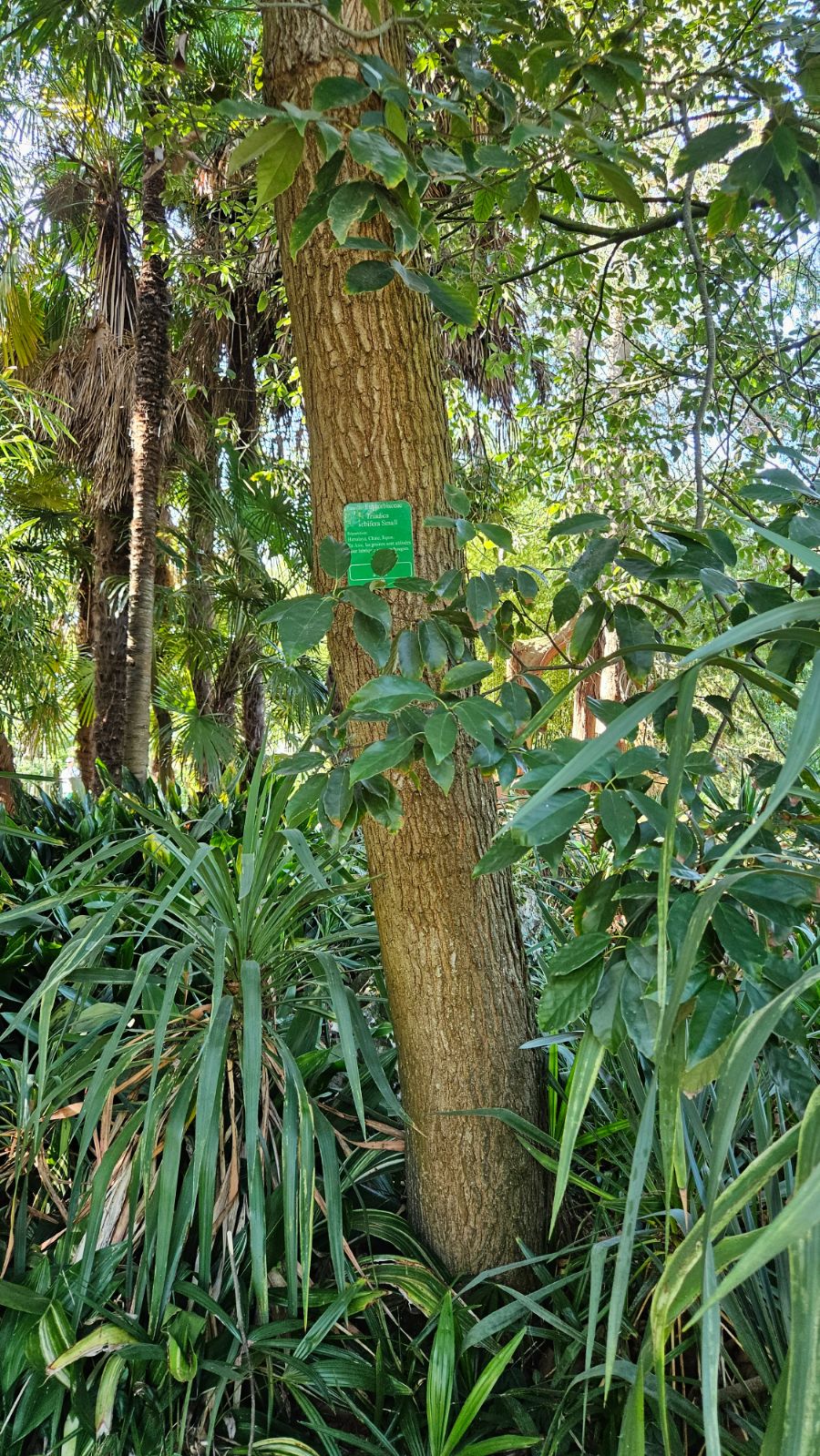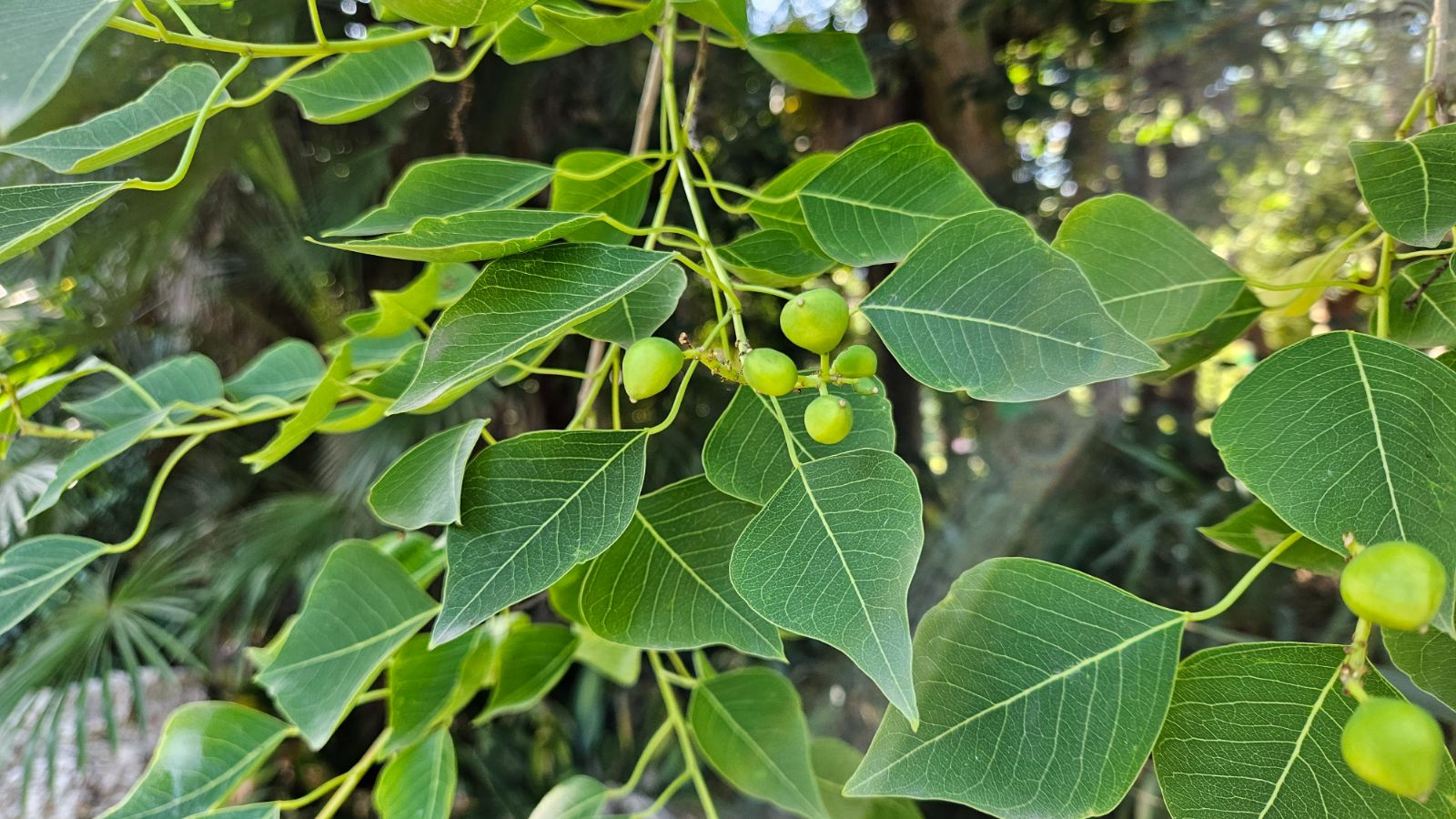Triadica sebifera
Credits
New article for Trees and Shrubs Online.
Recommended citation
'Triadica sebifera' from the website Trees and Shrubs Online (treesandshrubsonline.
Genus
Common Names
- Chinese Tallow-tree
Synonyms
- Croton sebiferum L.
- Sapium sebiferum (L.) Roxb.
- Stillingia sebifera (L.) Michx.
Other taxa in genus
Editorial Note
The text below is from Bean, who discussed this species under its old name Sapium sebiferum (L.) Roxb. We have transferred the text here from the redundant Sapium account, pending a full revision. For Sapium japonicum see Neoshirakia japonica.
Sapium sebiferum (L.) Roxb. Croton sebiferus L. Chinese Tallow Tree. – A deciduous tree to 60 ft high in China, with long-stalked acuminate leaves resembling in shape those of a black poplar and becoming crimson in autumn. Inflorescence similar to that of S. japonicum, but the male flowers arranged in cymose clusters along the axis of the inflorescence. Native of China, but long cultivated in the warmer parts of the world. The seeds have a waxy layer under the epidermis, used for making candles and soap, and an oil extracted from the seeds themselves is used for the same purpose. It was in cultivation in Britain early in the 18th century and is sometimes grown in greenhouses for its handsome foliage and economic interest. It is not reliably hardy in this country, but is naturalised in the south-eastern USA, where, like Rosa laevigata, it was already established early in the 19th century.
2019: Triadica sebifera has become an invasive alien in the southeastern United States.



